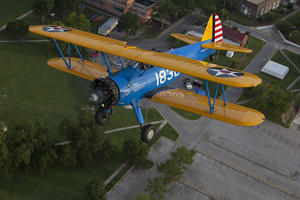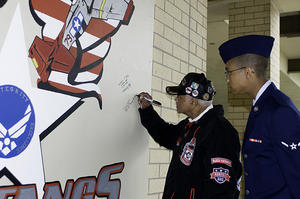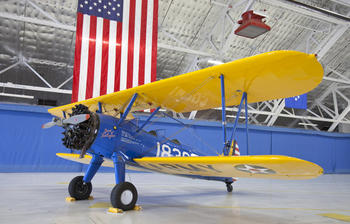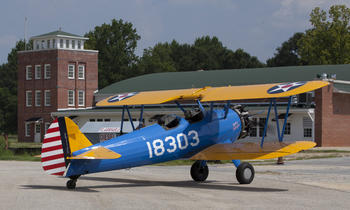Excerpt from Langston Hughes’ Will V-Day Be Me-Day Too?
When I take off my uniform,
Will I be safe from harm--
Or will you do me
As the Germans did the Jews?
When I've helped this world to save,
Shall I still be color's slave?
Or will Victory change
Your antiquated views?You can't say I didn't fight
To smash the Fascists' might.
You can't say I wasn't with you
in each battle.
As a soldier, and a friend.
When this war comes to an end,
Will you herd me in a Jim Crow car
Like cattle?Or will you stand up like a man
At home and take your stand
For Democracy?
That's all I ask of you.
When we lay the guns away
To celebrate
Our Victory Day
WILL V-DAY BE ME-DAY, TOO?
That's what I want to know.
In the 1940s influential African American poet, Langston Hughes, wrote the lines above pondering the complexities of America’s racism. How would America’s black soldiers be treated during and after World War II? For a group of young pilots and their support staff, this question constantly weighed on their lives—a theme in George Lucas’ new film Red Tails, which explores the history of the Tuskegee Airmen, the first African American pilots to fly in the military during World War II, who while fighting for freedom abroad, still endured segregation and inequality at home.
In August of 2011, the Smithsonian had its own “Red Tails” adventure when it acquired a PT-13D Stearman open cockpit, bi-plane called the Spirit of Tuskegee. The plane, once used at the Tuskegee Institute’s Moton Field, served as a training plane from 1944 to 1946 for the Tuskegee pilots. After its tenure with the Airmen, the plane served as a crop duster until it was bought by US Air Force Captain Matt Quy in 2005. Quy restored the plane to its World War II form and donated it to the National Museum of African American History and Culture (it will be on temporary display at the National Air and Space Museum's Udvar-Hazy Center in Chantilly, VA). The gift was gratefully accepted by the museum, but the question remained: how would the plane travel to Washington, DC?

It was decided that the Quy would fly the plane to DC, making notable stops along the way including trips to both the US Air Force Academy in Colorado and the Tuskegee University’s Moton Field in Alabama. Smithsonian Institution Archives staff member Michael Barnes had the unique opportunity to help capture the plane’s trip across the country. Michael, a photographer and fulfillment manager, captures images of the objects, people, and exhibits associated with the Smithsonian. On this trip, he documented the plane at its various stops along the way, even photographing the plane in the air! Michael divulged that his first shot taken from the plane was a little off, but he soon settled into the flight and was able to capture the plane as it traveled in its natural environment on its final journey.
On August 3, 2011, the Spirit of Tuskegee flew over the National Harbor near Washington, DC, as forty original Tuskegee airmen and hundreds of other members of the group watched from the ground below. Michael was on hand to photograph as the plane circled around the entire Harbor, stirring up memories of struggle and triumph for the men and women who helped get that plane in the air over sixty years ago. He topped off this journey by photographing the DC premier of the movie Red Tails.

For Michael, this trip not only was an interesting experience, but a personal one as well. His son Christopher Platte is an Air Force Crew chief, and Chris’ uncle, Captain Claude R. Platte, served as a trainer and pilot for the Tuskegee Airmen. Michael recalls Claude describing his experiences as a black airman. Platte once told Michael about being assigned to a new base and sitting in a room for five hours unattended, because the new base did not know how to deal with a black officer, for he could not sit with the white officers and could not be put with the enlisted men. Michael explains that this story brings the ironies of the war to life, how could a man who's willing to serve in the name of freedom, deal with inequality within his own ranks? Additionally, Michael had the opportunity to meet a number of airmen throughout the trip. What impressed him the most is the sense of pride and dignity the airmen display, not angry about the past, but proud of their accomplishments of doing a job that needed to be done.
It is that proud spirit that Michael sets his lens on. Though tasked to simply take images of the objects and events surrounding this aquisition, Michael tried to capture the significance of the moment and the essence of its cultural and historical meaning. To do so, Michael photographed people interacting with the plane and associated objects so that he might show the relationship between the two. Michael feels that it is important to share these images with the public since they serve as an “eye opening reminder of where people have been, how far we have come, and not to forget.”
Produced by the Smithsonian Institution Archives. For copyright questions, please see the Terms of Use.



Leave a Comment